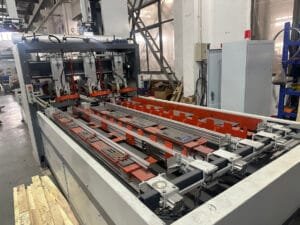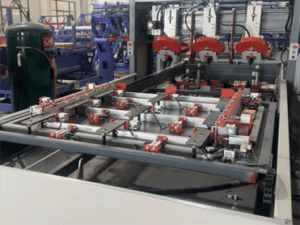How do presswood pallets stand up to termites? And what measures can be taken to prevent termite attacks? In this article, we’ll explore the natural resistance of molded pallets, additional protection strategies, and how PalletsBiz can help you create termite-proof pallet solutions.
Inherent Termite-Resistant Properties
Molded pallets are produced using raw materials that undergo two rounds of high-temperature treatment at 150–180°C during the manufacturing process. This effectively kills any insect eggs or parasites present in the wood, thus suppressing the conditions necessary for termite infestation.
Additionally, molded pallets are formed under high pressure—up to 1600 tons or more—with a resulting density of 0.9–1.1 g/cm³. Such high density makes it difficult for insect eggs to survive and prevents external termites from penetrating the pallet or nesting inside.
Chemical Methods
During the production of molded pallets, anti-termite agents can be added to the glue when mixing with wood shavings. Common additives include:
- Borates (e.g., boric acid, borax): These work by disrupting the termite’s digestive system and are suitable for indoor dry environments.
- Copper Azole (CA-B): An environmentally friendly preservative that provides both contact and stomach toxicity to termites.
- Solvents containing permethrin or chlorpyrifos: These are effective insecticides with strong repellent and toxic effects on termites.
Alternatively, the anti-termite chemicals can be sprayed or atomized directly onto the wood shavings during the glue mixing stage to ensure even distribution.
Articles on termite prevention for particleboard,
Molded pallets share similar production processes with particleboard, medium-density fiberboard (MDF), and their performances are also similar.
Here are several academic articles on termite prevention for particleboard, medium-density fiberboard (MDF), and granule board. Please click to refer:
1. Termite Resistance of MDF Panels Treated with Various Boron Compounds
2. Binderless Particleboard Resistance to Termite Attack
3. Resistance of Particleboards Made from Fast-Growing Wood Species to Subterranean Termite Attack
4. Biological Decay and Termite Resistance of Post-Treated Wood-Based Composites



